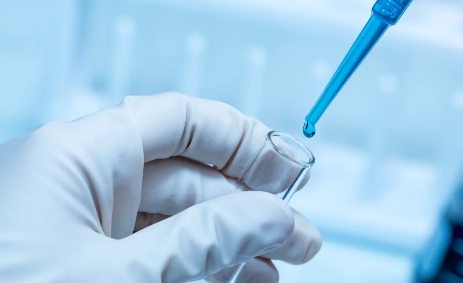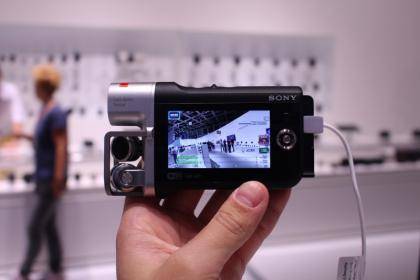Effective drug delivery through the skin is a complex science. Topical treatments such as gels, creams, and patches rely on their ability to permeate the skin effectively. The primary challenge in developing these treatments lies in ensuring that active ingredients adequately penetrate the skin barrier without causing harm. This is where in vitro permeation testing (IVPT) comes into play. IVPT mimics the conditions of the human skin to assess how well a drug can penetrate and be absorbed, ensuring the product’s efficacy and safety before clinical trials. Understanding IVPT’s role is crucial for anyone involved in the development of topical treatments and transdermal drug delivery systems.

What Is In Vitro Permeation Testing (IVPT)?
IVPT is a laboratory method used to evaluate the permeation of compounds through the skin. This technique involves placing a skin sample (often from a human or animal model) between two compartments. The donor compartment holds the formulation being tested, and the receptor compartment collects any permeated compounds.Researchers use this method to measure the rate at which active ingredients are absorbed through the skin barrier. IVPT provides a controlled environment that simulates human skin permeability, enabling scientists to identify the optimal formulations for topical drugs. The data collected from IVPT helps predict how a drug will behave in real-life applications, thus ensuring its efficacy and safety.
The Role of IVPT in Transdermal Drug Development
In the realm of transdermal drug development, IVPT is indispensable. Transdermal delivery systems, like patches, deliver drugs across the skin into the systemic circulation. These systems are favored due to their non-invasive nature, improved patient compliance, and sustained release of medication.IVPT plays a critical role in developing these systems by providing early insights into the effectiveness of various formulations. By evaluating the permeation characteristics of different compounds, researchers can fine-tune the formulations to enhance skin absorption. Additionally, IVPT helps in identifying potential irritants or compounds that may cause adverse reactions. This early detection is crucial for ensuring that the final product is both efficient and safe for patient use.
Key Methods Used in IVPT
Several methods are employed in IVPT to assess skin permeation. One common technique is the Franz diffusion cell method, which uses a diffusion cell to measure the rate of drug permeation. This involves mounting a skin sample between donor and receptor chambers.Another method is the flow-through diffusion cell system, which allows continuous flow of receptor solution, offering more dynamic testing conditions that can mimic in-vivo situations more closely.Synthetic membranes may also be used in place of biological samples for early-stage screening, offering consistency in barrier properties. Despite the method used, the goal remains the same: to provide a clear understanding of a drug’s permeation profile through the skin.
Importance of IVPT in Skin Permeation Evaluation
IVPT serves as a cornerstone in evaluating skin permeation for several reasons, primarily by offering a controlled, accurate, and reproducible assessment of topical formulations. It enables researchers to conduct high-throughput testing, thus speeding up development timelines.Another key advantage is minimizing the need for animal testing. As IVPT can use human skin samples, it aligns with ethical standards and provides more relevant data for human application. Furthermore, IVPT helps in the early identification of formulation issues, allowing developers to make necessary adjustments before proceeding to costly clinical trials. Overall, IVPT ensures that only the most promising formulations advance through the drug development pipeline.
Assessing Drug Penetration Through the Skin
Drug penetration through the skin is crucial for topical and transdermal formulations. IVPT measures this by determining how much of the drug penetrates the skin sample over a specific time. This involves quantifying the drug’s concentration in the receptor fluid.The data from IVPT helps understand the drug’s kinetics and dynamics, including its release rate, absorption, and ultimate bioavailability. By fine-tuning these parameters, developers can ensure that the drug reaches its target site in the needed concentration, enhancing its therapeutic effect.
Ensuring Safety and Efficacy of Topical Drugs
Safety is paramount in drug development. IVPT aids in this by enabling researchers to identify potential irritants and hazardous compounds early.By assessing formulation behavior under simulated conditions, researchers can predict adverse skin reactions. This helps in modifying the formulation to mitigate or eliminate adverse effects. Importantly, through repeated testing, IVPT can confirm a drug’s efficacy, ensuring that when it reaches clinical trials, it has a better chance of success.
Factors Influencing Skin Permeation in IVPT
Successful skin permeation depends on various factors, including the formulation’s components and the skin’s barrier function.
Formulation Components
The ingredients in a formulation, including the active drug, excipients, and penetration enhancers, significantly affect skin permeation.Active drugs must be in an optimal state to penetrate, and excipients play roles in stabilizing these drugs. Penetration enhancers, included in small amounts, are crucial in facilitating drug transport through the skin by transiently altering the skin barrier’s structure. Careful selection and balance of these components are vital for creating effective topical formulations.
Skin Barrier Function and Variability
The skin’s barrier function, largely provided by the stratum corneum, is crucial in IVPT outcomes. Factors like skin hydration, age, and health status can all influence permeation rates.Variability in skin samples, such as from different donors or body sites, can also affect test results. Thus, IVPT protocols must consider these variabilities to ensure consistent and reproducible data.
Challenges and Limitations of IVPT
Despite its advantages, IVPT faces several challenges and limitations. These must be navigated carefully to ensure accurate results.
Handling Complex Skin Models
Handling complex skin models can be challenging in IVPT. The skin’s multi-layer structure and its biochemical interactions are difficult to replicate accurately. Variability in skin samples, such as differences in thickness and health status, adds further complications.Moreover, while synthetic membranes can offer some consistency, they do not entirely mimic the biological complexity of human skin. This makes it crucial to use well-characterized, standardized skin models and ensure rigorous quality control.

Conclusion
In vitro permeation testing (IVPT) is undeniably crucial for evaluating skin permeation in drug development. By meticulously assessing how well a drug can penetrate the skin, IVPT ensures the formulation’s efficacy and safety before proceeding to clinical trials. Despite its challenges, IVPT remains a reliable and ethical method, minimizing the need for animal testing while providing crucial insights for the development of topical and transdermal treatments. Understanding IVPT’s importance and addressing its limitations can lead to more effective and safer skin-permeating drugs, ultimately benefiting patients and healthcare providers alike.






Leave a Reply